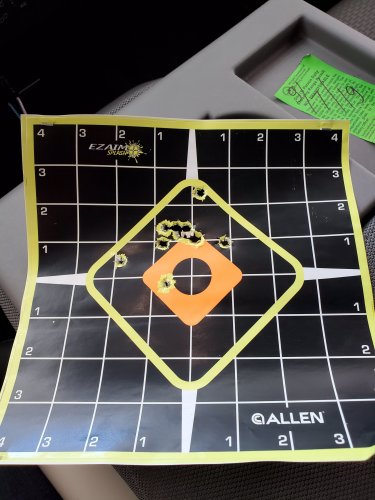deer_shooter
Well-known member
A couple of things I would recommend, and it is mostly to echo or expand on what a few others here have said.
1. Understanding Natural Point of Aim (NPOA) is a game changer. It sounds completely obvious, but having to "fight" your body position to keep the sights on target is going to degrade accuracy. The best way to discover NPOA, either at a hot range or dry firing, is to get into position, get your sight alignment and sight picture on the target, then close your eyes for a breath cycle or two. Don't shoot, just take a few breathes with your eyes closed. If you reopen them and you have an NPOA that is aligning you to the target, your sights should still be on the target (or very close to it). If you open your eyes, and you are off target, that means your NPOA wasn't aligned on the target. At the range, I usually check my NPOA before each course of fire.
2. Learn how to shoot sling supported. I have a collection of USGI cotton web slings, along with a leather "National Match" type. Either works just fine. You can get into a "hasty sling" supported position just as fast as a non-supported position. It just helps to snug the rifle up tight to your shoulder, and makes you and the rifle more of a single unit. Using a sling helps keep your body relaxed, since the sling is doing the work of holding the rifle tight to you. You should be able to open and close your support hand without affecting NPOA.
3. Learn shooting positions that work for you. For seated or kneeling (which seems to be the main topic regarding shooting positions), I have a few pointers. First is to get into a comfortable to you position. Some guys can shoot cross legged; others kneel, while others are seated with their legs partially extended and their knees bent. Personally, I can't hold a stable, cross-legged position. I can hold a stable kneeling position, so that's my go to. Next tip- avoid "bone to bone" contact. Place the point of your elbow on top of your knee cap. You'll feel the elbow sort of roll on the knee, and that's not stable, which isn't accurate. Now, slide your elbow forward, so that the bottom of your tricep is supported by the knee. That's a softer part of the body being supported by the bone of the knee. That is stable.
4. Good, frequent, dry fire practice is better than poorly done range days. You can practice just about everything other than shot follow through by dry firing. Shooting positions, breathing, sight alignment and sight picture, and trigger squeeze can all be done dry firing in the garage. Get the fundamentals down by dry firing, and watch how much improvement you'll see at the range.
Solid advice.





